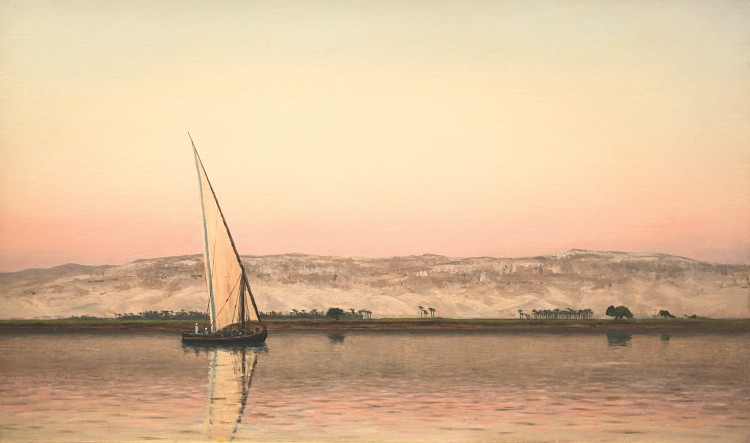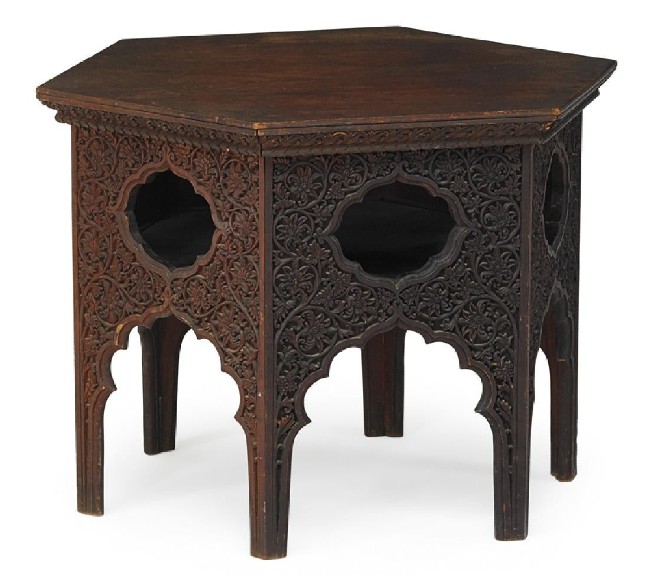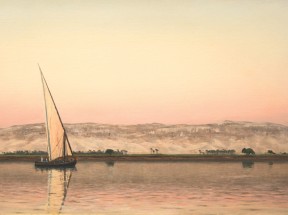
NEW YORK – The history of American decorative arts would look quite different were it not for Lockwood de Forest. Born into an affluent New York family in 1850, he grew up to be well traveled, with a passion for other cultures. Multitalented, he excelled as an architect, interior designer and painter. His landscapes were as admired and collected as were his furniture designs, which were heavily influenced by his travels to India.
Art professor Roberta A. Mayer, who wrote the 2008 book, Lockwood de Forest: Furnishing the Gilded Age with a Passion for India, noted the highly significant partnership between de Forest and Frederic Church, particularly as the two worked on Church’s showplace of a home, Olana, in upstate New York.

Frederic Church was Lockwood de Forest’s great uncle by marriage. Lockwood also grew up with Harriet Carnes, who was the orphaned niece of Church’s wife. The Church and de Forest families were close, and Church was a highly successful role model, Mayer said. In 1868, Lockwood spent time in Rome with Church exploring antiquity stores. By 1871, he started to study painting with Church. For the next 10 years, he spent time with Church as Olana was being designed and built, and he studied books that Church owned, including Pascal Coste’s Monuments Modernes de la Perse (1867) and Jules Bourgoin’s Les Arts Arabes (1868). “Naturally, Church was one of de Forest’s earliest patrons,” Mayer said.

Both his paintings and furniture he designed are highly sought after today by collectors. Mayer noted that de Forest was a key part of America’s Gilded Age, remembered for his partnership with Louis Comfort Tiffany in the firm of Tiffany & de Forest from 1880 to 1882. “During most of that time, de Forest traveled through India, Kashmir and Nepal, making purchases for the new firm. He also established the Ahmedabad Woodcarving Co.,” she said. “After his ties to Tiffany were formally dissolved, de Forest continued to work independently as an importer, designer and artistic decorator. In 1907-1908, he sold his business to Tiffany and transferred the remainder of his inventory. His designs lost their appeal with the 20th-century shift toward modernism but gained renewed appreciation after his papers were donated to the Archives of American Art (now digitized).
Of his furniture, Mayer said, “It is restrained in form, displaying a sensitivity to the English Arts and Crafts movement, yet wonderfully embellished with beautifully hand-carved teakwood from Ahmedabad, India, as well as decorative boards from chests made in Damascus.”

Nathan Vonk, owner of Sullivan Goss – An American Gallery in Santa Barbara, Calif., said the lasting appeal of de Forest’s paintings is largely due to the unique way they bridge the aesthetics of the Hudson River School with a developing American Modernism. “This is the most intriguing part of de Forest’s legacy,” he said. “His landscapes were clearly meant to be documentations of specific places and times. Many of his paintings are labeled with a location and the exact day in which they were painted, and he was not one to take artistic liberties with the composition of his chosen scene. At the same time, his paintings are minimal, distilled depictions of these scenes with an incredible freshness and sense of immediacy. His nocturne paintings of the moon above the ocean are the most pronounced examples of this.”

De Forest is said to have favored painting small oil sketches plein-air from his travels, usually in one sitting, to capture the mood or emotion he felt at the time. “I think his plein-air sketches are deceptively romantic. While they are certainly straightforward and unembellished, the artist’s wanderlust and profound curiosity about world cultures are evident to anyone who shares those feelings,” Vonk said.
After a period of obscurity after his passing, the market for de Forest’s paintings has been resurgent in the last decade or so, he said. “Increased exposure from exhibitions at institutions like the Palm Springs Art Museum, the Cooper-Hewitt Museum, and through galleries like ours in Santa Barbara, as well as Gavin Spanierman LTD and Debra Force Fine Art in New York has made it clear that de Forest’s work is finally getting the national attention it deserves.”
# # #


